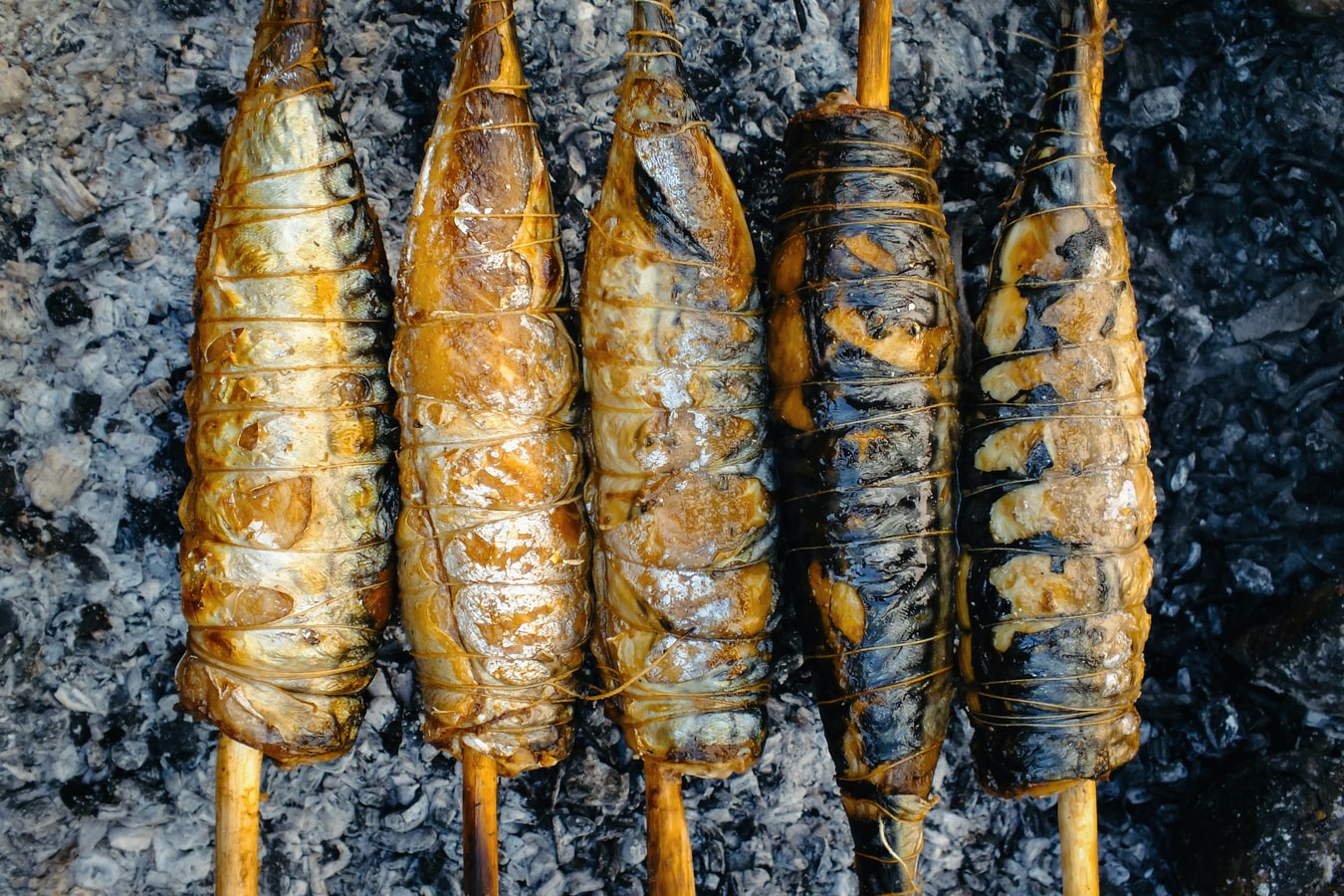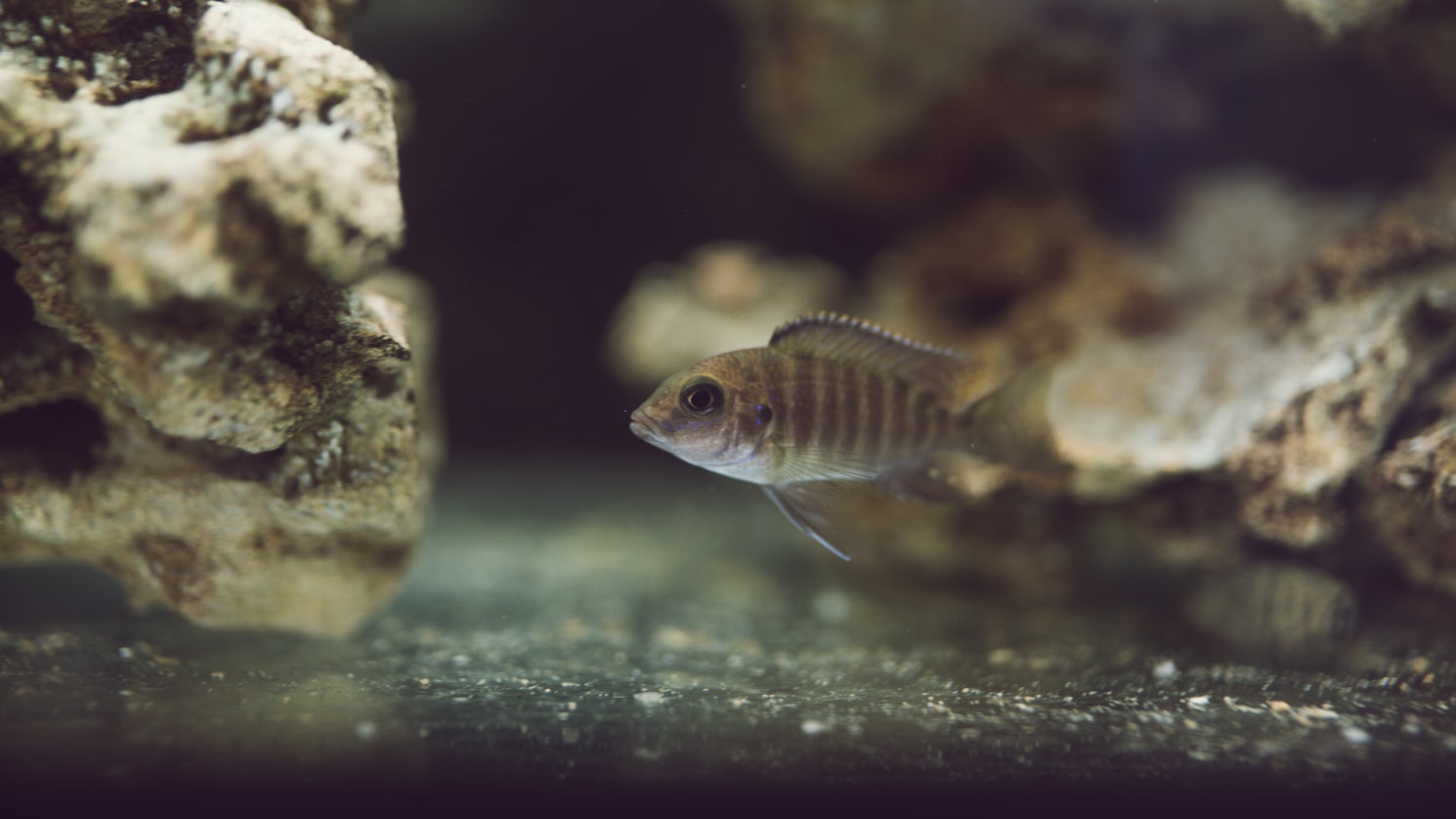Pearlfish
What'll I do after diving? I dunno. Ma wants me to be a counter-they keep track of all the numbers, like pearl sales, food bought, food sold, an' all that. Da wants me to be a feeder - he's always lookin' for more help, and "feed more fish an' more fish'll feed you." Sa says it should be up to me since I'll be doing the job for the rest of my life.. I wish I didn't have to grow up, I like diving.
Basic Information
Anatomy
From top to down, here is the anatomy of a pearlfish; for this record a two-year-old fish was used.
Hair
The fish has no hair, but there are small spikes on the edges of its dorsal fins that can cut the skin of the unwary.
Eyes
An eye, inner black ringed by wide yellow and ringed by a stripe of white in turn, sits on both sides of its face with about the width of three human fingers between them.
Mouth
The normal puffed up fish lips make up the mouth area; no whiskers or bones.
Body/Skin
Its skin is made of scales that alternate between a dull yellow and soft black, probably used for camouflage in the river weeds. The stripes go all the way around the body and line up perfectly on the other side. The belly, where the pearls are kept and made, is a creamy white and is the width of three to four human fingers. The length of the fish at two years of age is the length of a dragon's muzzle.
Fins
There are two fins along its back, the first one tall and narrow while the second one is lengthy and short. There are two medium-sized fins at the top part of the belly, sturdier than the two delicate and lacy fins coming up behind the mouth. It's thought that the bottom fins help the fish gain speed while the top fins are used to turn in the currents. Finally, the tail fin is like a calligraphy brush and is usually one and a half times the size of the head.
The fish has no hair, but there are small spikes on the edges of its dorsal fins that can cut the skin of the unwary.
Eyes
An eye, inner black ringed by wide yellow and ringed by a stripe of white in turn, sits on both sides of its face with about the width of three human fingers between them.
Mouth
The normal puffed up fish lips make up the mouth area; no whiskers or bones.
Body/Skin
Its skin is made of scales that alternate between a dull yellow and soft black, probably used for camouflage in the river weeds. The stripes go all the way around the body and line up perfectly on the other side. The belly, where the pearls are kept and made, is a creamy white and is the width of three to four human fingers. The length of the fish at two years of age is the length of a dragon's muzzle.
Fins
There are two fins along its back, the first one tall and narrow while the second one is lengthy and short. There are two medium-sized fins at the top part of the belly, sturdier than the two delicate and lacy fins coming up behind the mouth. It's thought that the bottom fins help the fish gain speed while the top fins are used to turn in the currents. Finally, the tail fin is like a calligraphy brush and is usually one and a half times the size of the head.
Genetics and Reproduction
Not every female pearlfish will want to have eggs; when ten females are grouped together and males are introduced, about four will choose to mate and carry eggs. Others are not interested and will be helpers by bringing nest making material or food.
A female fish must be at least two years old to begin using sacs for eggs, but males can mate at a younger age of one and a half years.
A female fish must be at least two years old to begin using sacs for eggs, but males can mate at a younger age of one and a half years.
Growth Rate & Stages
The lifestyle of the pearlfish has been studied by magic users, fisherfolk, and wide-eyed children since they were discovered:
- Eggs are carried in what are known as pearl sacs. The difference is that eggs will make the pouches take on a circular shape while pearls look like small bumps underneath the skin
- Before hatching, the egg sac is removed by the fish and placed in a submerged nest of branches, plants, and water weeds made in a tranquil area
- After hatching, the hatchlings stay in the nest and eat the plant life
- About seven days later, when the size of a dragon's talon, the hatchlings leave and venture out into the calm area
- 10 or more days after that, when the size of a dragon's paw, the hatchlings become young and start swimming in the current areas
- An adult's size is set once they reach two years of age; at that point they won't grow longer but they might grow wider
- Pearlfish can start having young at around two years and will deposit any developed pearls in preparation to keep eggs
Ecology and Habitats
Freshwater rivers, streams, and lakes are the best places for these fish.
Dietary Needs and Habits
Pearlfish tend to eat plant matter, small bugs, and worms. So far farms have seen them eat almost anything organic, which gave rise to the rumors of some farmers being paid a lot of coin to, um, "get rid" of beings.
Habitats need to be a river, stream, or lake that has areas of clam water at a temperature of 17 to 25°C.
Habitats need to be a river, stream, or lake that has areas of clam water at a temperature of 17 to 25°C.
Additional Information
Social Structure
Most shoals tend to stick to a number of fifty or so fish with a ratio of 1/3 male and 2/3 female.
Uses, Products & Exploitation
Pearlfish are used in a variety of ways and are a cornerstone of the market. They're delicious to eat grilled, but it's the pearls they create which bring in the coin. At this point there are several families of farmers who control the trade of pearlfish resources and they keep their secrets well guarded.
Geographic Origin and Distribution
Freshwater streams, rivers, lakes
Perception and Sensory Capabilities
Sound
Pearlfish are spooked easily, but no matter the amount of sound made above water the fish will eventually come back to the area they fled from.
Sight
When fed in the fish farms, many pearlfish surge forward to get their food flakes, however, if the flakes are added at the far end of the pool, the fish won't see them. Instead, when objects are too far away, they rely on other fish to see if the motion is food, an enemy, or something else.
Smell
It's unknown if these fish can smell; however, when rotten, the smell lets other creatures know a dinner can be found.
Taste
These fish are similar to humans in that many of them will eat anything, but several of them will be very picky about what they eat. Common food includes worms, insects, and bits of plant matter, but there are some that feed on other, smaller fish, and a few rare ones that prefer to eat other pearlfish.
Touch
It's thought they have the normal sense of touch that any wild creature posses; "Ah, something touched me better get away fast." The ones that eat other pearlfish don't run away, but will bite whatever they sense is nearby.
Pearlfish are spooked easily, but no matter the amount of sound made above water the fish will eventually come back to the area they fled from.
Sight
When fed in the fish farms, many pearlfish surge forward to get their food flakes, however, if the flakes are added at the far end of the pool, the fish won't see them. Instead, when objects are too far away, they rely on other fish to see if the motion is food, an enemy, or something else.
Smell
It's unknown if these fish can smell; however, when rotten, the smell lets other creatures know a dinner can be found.
Taste
These fish are similar to humans in that many of them will eat anything, but several of them will be very picky about what they eat. Common food includes worms, insects, and bits of plant matter, but there are some that feed on other, smaller fish, and a few rare ones that prefer to eat other pearlfish.
Touch
It's thought they have the normal sense of touch that any wild creature posses; "Ah, something touched me better get away fast." The ones that eat other pearlfish don't run away, but will bite whatever they sense is nearby.
PEARL COLORS
PINK
irritant: petals
use: buttons
fortune charms
expense: moderate
irritant: petals
use: buttons
fortune charms
expense: moderate
RED
irritant: mixed mud/blood
use: earth magic
healing
expense: high
irritant: mixed mud/blood
use: earth magic
healing
expense: high
ORANGE
irritant: pearlfish scales
use: dream walking
vomiting
expense: moderate
irritant: pearlfish scales
use: dream walking
vomiting
expense: moderate
YELLOW
irritant: pollen
use: flavor
healing
expense: moderate
irritant: pollen
use: flavor
healing
expense: moderate
BLUE
irritant: ice troll tears
use: water magic
expense: extremely high
irritant: ice troll tears
use: water magic
expense: extremely high
GREEN
irritant: plants
use: weak earth magic
expense: cheap
irritant: plants
use: weak earth magic
expense: cheap
BLACK
irritant: bug carapace
use: necromancy
expense: low
irritant: bug carapace
use: necromancy
expense: low
SILVER/GREY
irritant: ash
use: unknown
expense: cheap
irritant: ash
use: unknown
expense: cheap
Lifespan
10 years
Conservation Status
The pearlfish aren't under protection since many of them are still swimming about in the wild, and thanks to the fact that mature fish have the best pearls, conservation doesn't seem to be needed in the future.
Average Weight
.8 to 1 kilogram
Average Length
10 to 25 cm

by Dennisagati
Remove these ads. Join the Worldbuilders Guild










The pearlfish sounds really interesting. You've obviously put a lot of thought into them! :D I really like the chart about different pearl colours. And the section about reproduction - I like that some pearlfish are childfree by choice. I did notice that under 'mouth' you have some stuff about krakens... copy/paste error there?
Explore Etrea | March of 31 Tales
Yeeeeeep, that was a copy-paste error, thanks for pointing that out! (And I'm glad you enjoyed reading about the pearlfish, I had a lot of fun writing about them)